
Despite living short lives, butterflies are cherished for their fleeting beauty. On average, they can live between two to four weeks. But how long butterflies live depends on their size, environment, climate, and species. Each species has different life expectancies, and some may even surprise you!
To understand their short lives, scientists studied butterflies in captivity. However, these results weren’t very fruitful. But in the wild, elements like weather and predators greatly affect their survival.
Butterflies live in every single continent except Antarctica. They’re found in grasslands, woodlands, mountains, and coasts. They generally prefer warm climates and basking in the sun. Meanwhile, some species live underground as larvae.
As of now, there are 17,500 butterflies worldwide and around 750 in the United States. Which begs the question, how come so many butterflies still exist even though they don’t live that long? You can find all the answers right here!
What are Butterflies?

Butterflies and moths belong to the Lepidoptera order. They have six legs, two antennae, and an exoskeleton. Their body has three parts: the head, thorax, and abdomen. And depending on the species, a butterfly’s wings can come in many different shapes, colors, and sizes.
The Life Cycle of a Butterfly

Butterflies live a complex life cycle and experience metamorphosis. Metamorphosis is when an animal or insect changes form as they mature. Butterflies take on four forms throughout their lives: egg, caterpillar, pupa, and adult.
Egg

Butterfly eggs are small and have a layer of wax around them to stay moist. This stage usually lasts between three to seven days, but it can vary from species to species.
Female butterflies lay their eggs on leaves during spring, summer, and fall. They lay many eggs to increase the number of hatched offspring. When these eggs hatch into caterpillars, these leaves serve as their food.
Caterpillar or Larva

When the egg hatches, the butterfly larva, known as the caterpillar, comes out. The caterpillar has a tube-shaped body, many sets of legs, and tiny eyes.
Once it hatches, it will start eating the leaf under it. For the rest of its life as a larva, the caterpillar will only keep eating. That’s why the second stage is known as the feeding stage.
As the caterpillar grows, it sheds its skin up to five times. They can even grow up to 100 times more during the larval stage.
Pupa

The transition stage begins when the caterpillar stops eating. It hangs down from branches or leaves and molts into a chrysalis. This is when its metamorphosis begins.
An average chrysalis looks like a shiny, silky shell. Inside, the pupa goes through a massive cellular transformation. This stage can last for a few weeks or a few years, depending on the species.
Adult

When the pupa emerges as a butterfly, it looks nothing like a caterpillar. The adult butterfly has long antennae, long legs, compound eyes, and wings.
For the rest of its life, the adult prioritizes mating and laying eggs. This final stage of their lives is the reproductive stage.
For food, some species feed on flower nectar while others don’t eat at all. Though most live for two weeks, some species hibernate during winter and live for months.
Behavior
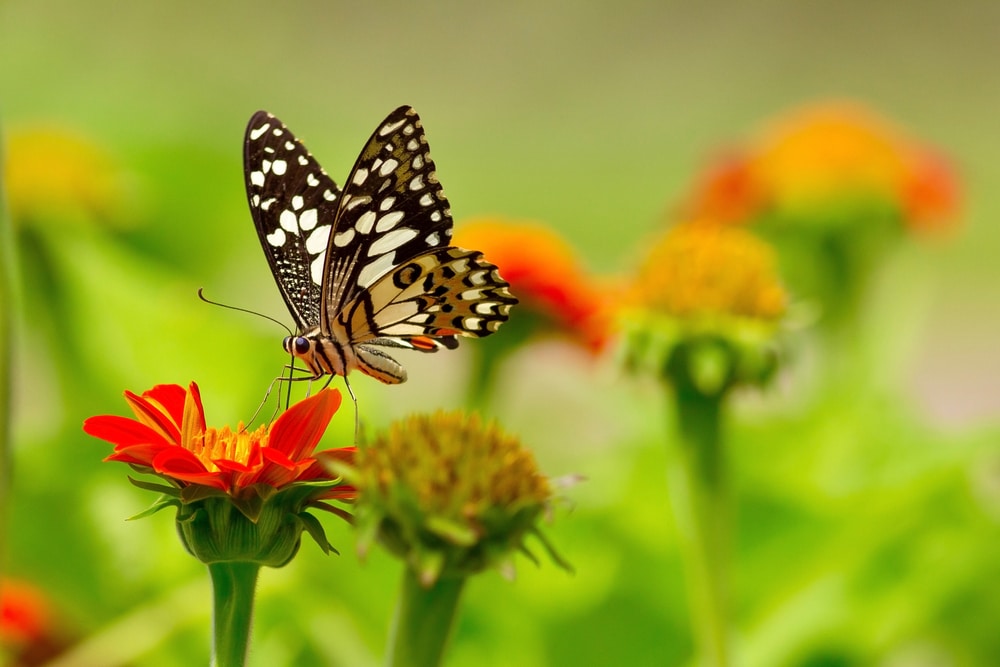
Ever wonder why butterflies are attracted to some people? That’s because they’re attracted to the salt in their sweat!
An adult butterfly’s diet usually consists of liquids such as water and nectar. But during mating season, butterflies need sodium. They usually consume it from the salt in mud and animal waste.
Butterflies also feed on nectar, tree sap, and rotting fruit. Since they often hang around plants, butterflies are major contributors to pollination.
Butterflies use their antennae for sensing wind and scents. Some species have hooked antennae while others have knobbed ends. Using their feet to taste, they can also judge which leaves to best lay eggs.
Butterflies are ectothermic, which means they rely on the sun’s warmth for body heat. To fly, they need to keep their body temperature at 81℉ (27 ℃). For this reason, some species have dark wings to gather more light.
Since butterflies live only a few weeks, they need to mate as soon as possible. Most butterfly mating rituals last for almost 12 hours. These rituals tend to vary among species. But in general, this involves gaining the female’s attention through complex dances.
What Factors Affect a Butterfly’s Life?

1. Species
Certain species can live longer than others. Unlike the painted lady butterfly’s 2-week lifespan, monarchs can live for 2 to 6 weeks. Some generations migrate and hibernate, making them capable of doubling their lifespan.
2. Size
Smaller butterflies usually live shorter lifespans. Some of the smallest species only live for a week, like the Checkered White. Another example is Queen Alexandra’s birdwing, the largest butterfly in the world. It can live up to three months.
3. Captivity
Butterflies that live in captivity have a longer lifespan than those living in the wild. Outdoors, butterflies get exposed to external elements like the weather or predators.
Even so, captive butterflies still have short lives. Yet, they tend to outlive their natural lifespan. This is because of a lack of threats and plenty of food sources.
4. Temperature
These insects are cold-blooded, so the weather and climate affect them a lot. For example, eggs laid in cold climates don’t hatch until the temperature is warmer.
Butterflies that live in warmer zones often have longer lifespans than other species. For this reason, migratory and tropical species live longer than mountain butterflies.
5. Climate Change
Climate change has a major impact on all butterfly species’ lifespans. As the world gets warmer, their relationship with host plants gets disrupted. They may even have to travel longer, which exposes them to more dangers.
6. Habitat Change and Loss
When farmers use pesticides, butterflies are affected despite not being the target. Overuse of chemicals leads to the destruction of their natural habitat. Human development also segments the flying patterns of migratory butterflies. When butterflies are unable to reach their destination on time, they tend to die faster.

SHARE THIS IMAGE ON YOUR SITE
<a href="https://outforia.com/how-long-do-butterflies-live/"><img style="width:100%;" src="https://outforia.com/wp-content/uploads/2022/07/how-long-do-butterflies-live-infographics.jpg"></a><br>how long do butterflies live <a href="https://outforia.com">Outforia</a>Types of Butterflies and their Lifespan
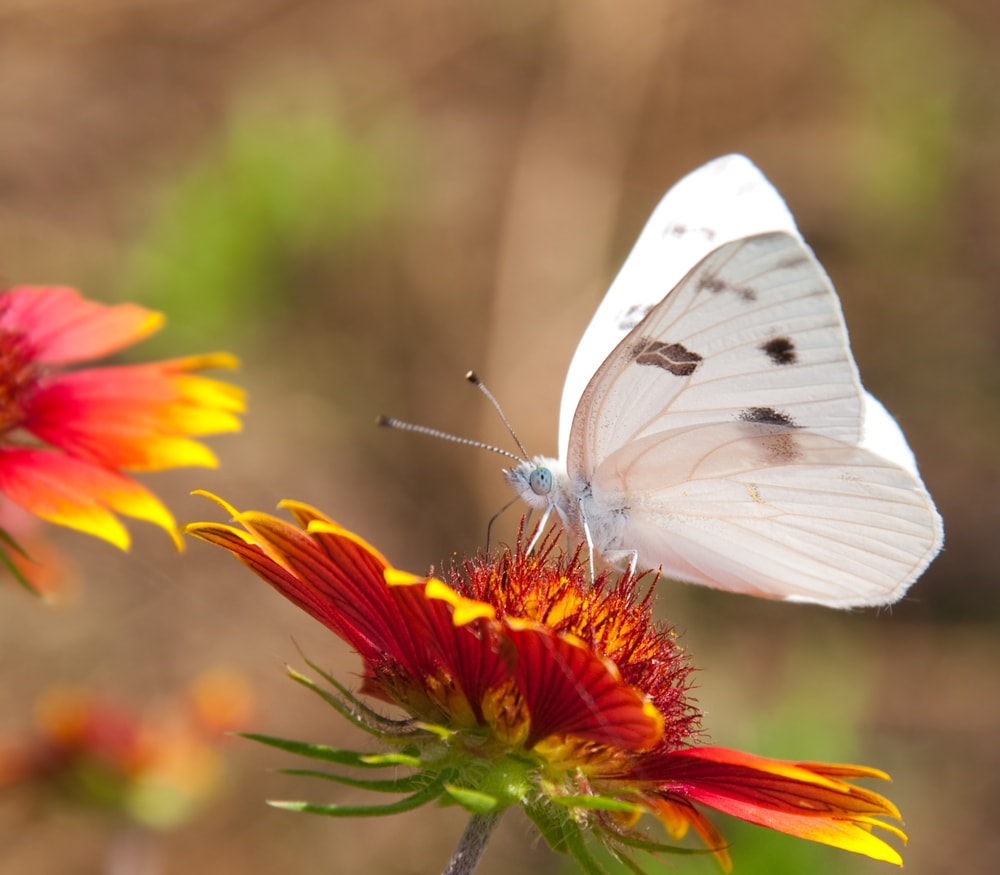
Butterflies belong to six families. Each family has unique characteristics and varying lifespans. For this section, we’ll talk about one butterfly from each family and figure out how long they live!
1. Family Hesperiidae: European Skipper
(Tymelicus Lineola)

European skippers have big eyes and heads with spread-out antennae. They mainly live in the European continent, where they’re called the Essex skipper. This butterfly was accidentally introduced to North America in 1910.
The European skipper flies very fast at low altitudes. Its wings are orange with black margins and dark veins. It has a chubby and hairy body with a wingspan of at least 1 inch (2.5 cm).
How long do European skippers live?
An adult skipper may live up to one year. It lays its eggs during winter and hatches in the spring. That’s why it lives longer than other species of butterflies.
2. Family Lycaenidae: Common Blue Butterfly (Polyommatus Icarus)

The common blue butterfly is the most common species in Britain and Ireland. A small species, their wingspan only reaches 1 inch (2.5 cm). Males of this species have blue coloring, while females are brown with variations of blue.
This species likes sunshine and frequents flowers. Males are generally more active and set up territories to patrol in search of shy females. The females’ main activities are eating nectar, resting, and laying eggs. When both sexes meet, they mate immediately.
How long do common blue butterflies live?
Under proper conditions, the common blue can live up to 3 weeks. Competition from other blue butterflies contributes to their short lifespans.
3. Family Nymphalidae: Monarch Butterflies
(Danaus Plexippus)

The monarch butterfly is perhaps the most recognized species in the world. It is a reddish-orange butterfly with black vein patterns bordered by white spots. If you look at it long enough, its wings resemble stained glass.
They’re native to North America and are divided into two groups. These are the western monarchs and the eastern monarchs. They can be found in the Rocky Mountains, California, the Great Plains, and Canada.
Their coloring warns predators they’re poisonous and taste foul. They eat milkweed, which is a toxic herbaceous plant. But monarchs can resist its toxins and mainly eat it their whole lives. These ingested toxins are what keeps predators from preying on monarchs.
How long do monarch butterflies live?
An average monarch’s lifespan changes depending on the time of the year it is born. The species typically live between 2 to 6 weeks. Meanwhile, the migratory monarch can live up to 9 months.
4. Family Papilionidae: Swallowtail Butterfly
(Papilio Machaon)

Swallowtail butterflies are named after their distinctive look. They have tail-like extensions coming down from their posterior wings. They are sizeable butterflies, and both males and females have wingspans of up to 3.5 inches (8.9 cm).
They’re spotted in every continent except Antarctica. Most species live in Asia, some in North America, and only a few in Europe. It is the biggest butterfly populating Britain. They also have many color patterns, from red, yellow, orange, and green.
How long do swallowtail butterflies live?
These insects live longer than your typical butterfly. Adults can live up to a month. Some species, like the black Swallowtail, only live 12 days. Other species can live up to 45 days. Due to its mediocre lifespan, the adult swallowtail spends most of its time eating and mating.
5. Family Pieridae: Psyche Butterfly
(Leptosia Nina)

The small psyche butterfly is found in India, Southeast Asia, and Australia. It is mainly white with a black spot on its forewings. They fly slowly and erratically, bobbing up and down as they go.
They usually fly low and rarely leave the ground. The wingspan of a typical adult can reach up to 1.7 inches (4.3 cm).
How long do psyche butterflies live?
The lifespan of Pieridae adult butterflies is less than one year.
6. Family Riodinidae: Duke of Burgundy
(Hamearis Lucina)
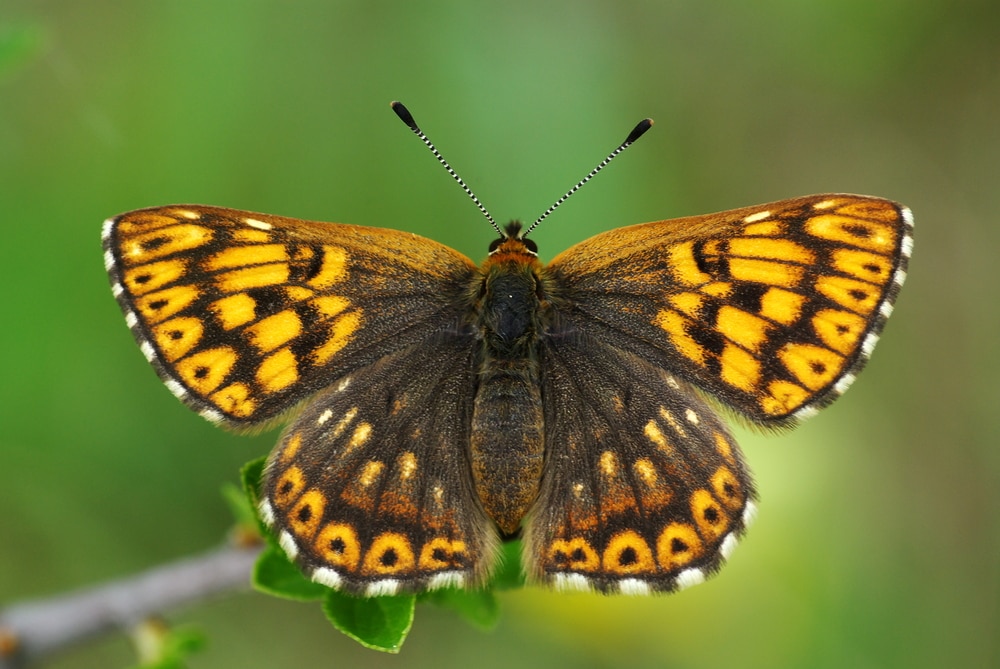
The Duke of Burgundy is a European butterfly of the Riodinidae family. It received this name because it resembles the fritillaria, a spring flower. The species are small-bodied with checkered brown and orange wings.
They prefer to live in grasslands and sunny woodlands. The females are elusive and stay low on the ground. They often spend their time resting or looking for places to lay eggs.
How long do Duke of Burgundy butterflies live?
This population is now classified as a priority species for conservation. They have a short lifespan of 8 to 12 days and spend most of this time finding a mate.
You may also like: 29 Different Types Of Butterflies – Pictures, Chart, Facts And Guide
Why are Butterfly Lifespans so Short?

Butterflies’ lifespans are so short due to their genetic makeup. It determines everything: their appearance, colors, and how long each life stage lasts. Outside factors like human behavior and climate change greatly influence their short lives.
You may also like: 17+ Species Of Poisonous Caterpillars Found Around The World
Why Are Butterflies Important?
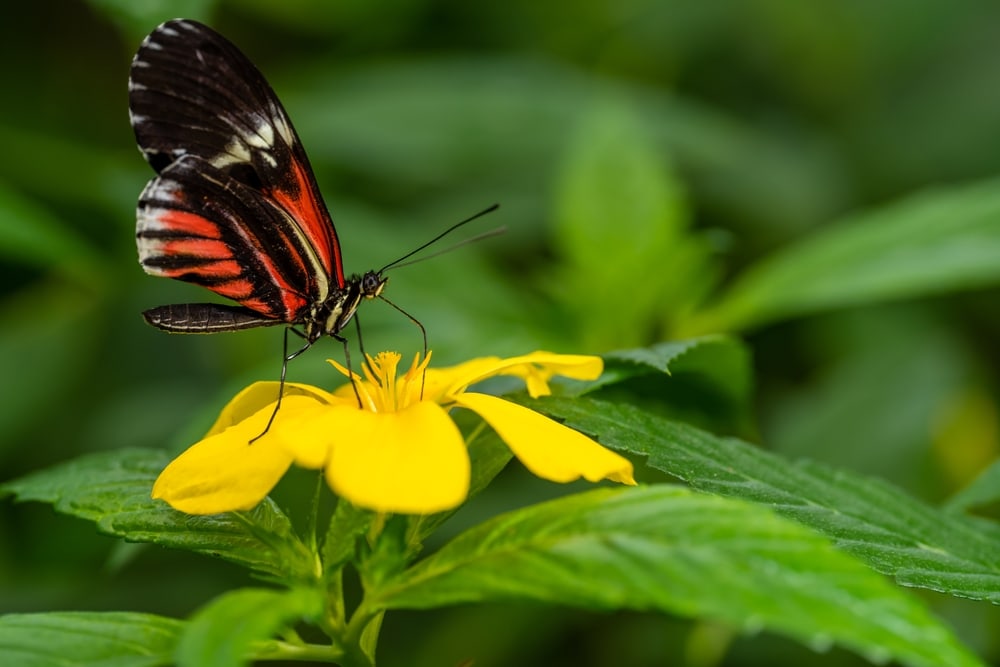
Butterflies are important because they’re indicators of healthy ecosystems. Areas with many butterflies also have other invertebrates. They’re especially beneficial to the environment because they pollinate flowers.
Butterflies can serve as a natural pest control. Many insectivorous animals feed on butterflies and contribute to the food chain. These insects are used as model organisms to learn about climate change and habitat loss.
You may also like: 16+ Different Types Of Bees: Field Guide With Facts, Pictures And More
Butterfly Fun Facts

1 | Butterflies can’t fly if they feel cold
They need to spread their wings into the sun to get warmed up. These wings have a network of capillaries that activates the heat in their veins. It’s how hemolymph, similar to butterfly blood, gets transported throughout their bodies.
2 | The Western Pygmy Blue is the smallest butterfly in the world


It only measures 0.7 inches ( 2cm). The largest butterfly is Queen Alexandra’s birdwing. Its’ wingspan measures 11 inches (28cm) and weighs 0.9 oz ( 25g).
3 | Butterflies and moths belong to the same family
Despite being in the same family, they are different from each other in many ways. While butterflies rely on the sun, moths are born nocturnal. Unlike butterflies, moths have less vibrant wings and brown or gray colors. Butterflies have thin antennae, while moth antennae seem fuzzy.
4 | Butterflies are covered in tiny scales
The wings have a chitin layer covered with hairs called scales. These reflect light and contain pigment, which gives them their unique appearance. When the scales fall off, their wings look transparent or translucent.
Butterflies FAQs
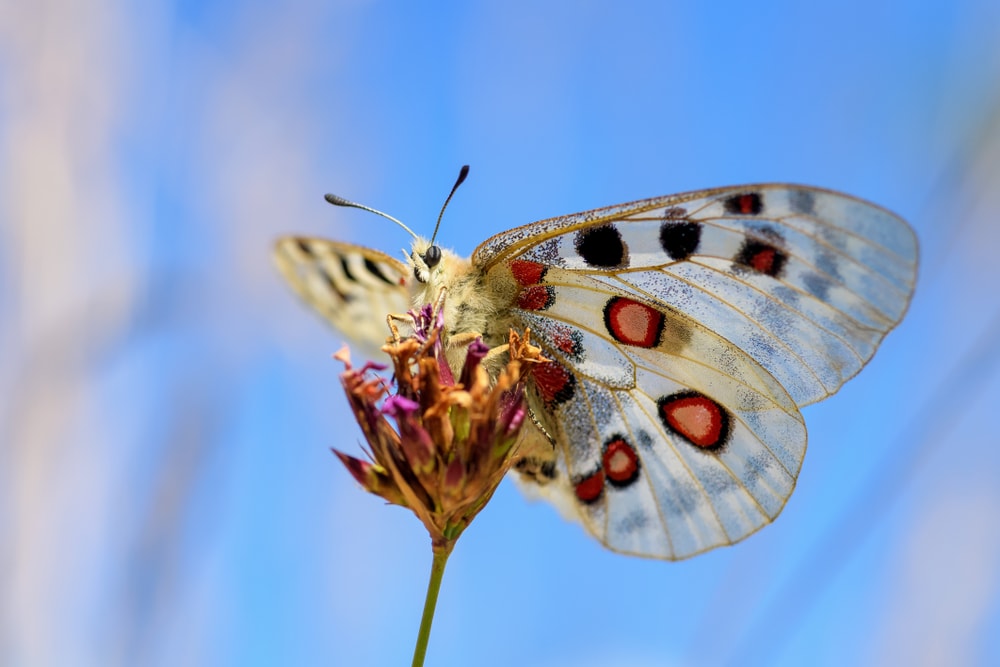
Do butterflies bite?
Butterflies never bite because they can’t. As caterpillars, they use their mandibles to eat leaves which gives them the ability to bite. But as adults, their mouths transform into a long, curled proboscis. It looks like a straw, so they can’t physically bite you in any way.
Are butterflies a good pet?
Butterflies can be pets as long as their needs are met. They can live comfortably with enough flying space, food, and temperature. Some butterflies don’t feed, but the ones that do need nectar or sugary substances.
Do butterflies sleep?
Butterflies don’t sleep. Instead, they rest by hanging upside down with their wings closed. Their wings’ undersides make for perfect camouflage, so you can barely see them when they rest. Because they don’t have eyelids, a butterfly’s eyes are always open.
Do butterflies drink water?
Yes, butterflies drink water. Adult butterflies ingest liquids through their proboscis. They can sip water from damp patches, muddy soil, and juices from rotting fruits.








